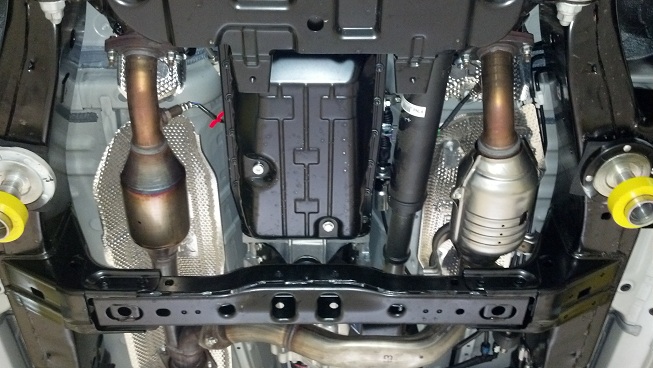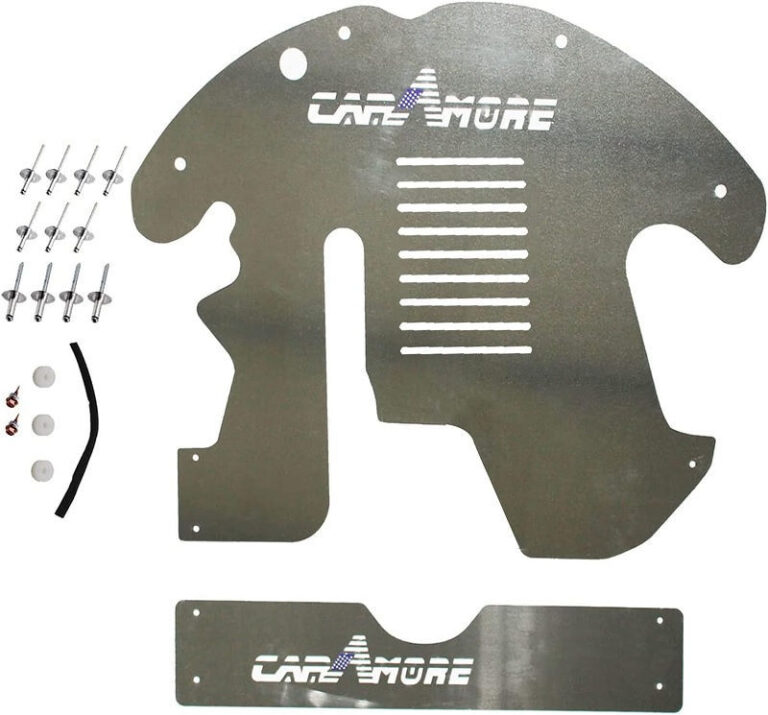The 2025 Toyota 4Runner: An Examination of the Catalytic Converter
Related Articles: The 2025 Toyota 4Runner: An Examination of the Catalytic Converter
Introduction
In this auspicious occasion, we are delighted to delve into the intriguing topic related to The 2025 Toyota 4Runner: An Examination of the Catalytic Converter. Let’s weave interesting information and offer fresh perspectives to the readers.
Table of Content
The 2025 Toyota 4Runner: An Examination of the Catalytic Converter

The 2025 Toyota 4Runner, renowned for its rugged off-road capabilities and enduring reliability, incorporates a vital component in its emission control system: the catalytic converter. This sophisticated device plays a crucial role in mitigating harmful pollutants emitted from the vehicle’s engine, safeguarding both the environment and public health.
Understanding the Function of the Catalytic Converter
The catalytic converter operates on the principle of chemical catalysis, utilizing a specialized metallic substrate coated with precious metals like platinum, palladium, and rhodium. As exhaust gases flow through the converter, these metals act as catalysts, facilitating chemical reactions that transform harmful pollutants into less harmful substances.
The Catalytic Conversion Process
The process involves three primary reactions:
- Oxidation: Carbon monoxide (CO), a colorless and odorless gas that can be fatal in high concentrations, is oxidized into carbon dioxide (CO2), a less harmful greenhouse gas.
- Reduction: Nitrogen oxides (NOx), a group of gases contributing to smog and acid rain, are reduced to nitrogen (N2) and oxygen (O2).
- Hydrocarbon Oxidation: Unburnt hydrocarbons (HC), released during incomplete combustion, are oxidized into carbon dioxide and water (H2O).
Benefits of the Catalytic Converter
The catalytic converter’s role in reducing harmful emissions offers several significant benefits:
- Improved Air Quality: By converting harmful pollutants into less harmful substances, the catalytic converter significantly contributes to cleaner air quality, improving public health and reducing the incidence of respiratory illnesses.
- Environmental Protection: The reduction of harmful emissions helps to mitigate climate change by reducing greenhouse gas emissions and safeguarding the environment from the adverse effects of air pollution.
- Compliance with Emission Standards: The catalytic converter enables vehicles to meet stringent emission regulations, ensuring compliance with environmental standards and promoting sustainable transportation.
- Fuel Efficiency: By optimizing combustion efficiency, the catalytic converter can contribute to improved fuel economy, reducing fuel consumption and lowering running costs.
The 2025 4Runner’s Catalytic Converter: A Technological Advance
The 2025 4Runner’s catalytic converter is designed to meet the latest emission standards, incorporating advanced technologies for enhanced efficiency and durability. These advancements include:
- High-Density Substrate: The use of a high-density substrate maximizes the surface area available for catalytic reactions, resulting in greater conversion efficiency and reduced emissions.
- Precious Metal Optimization: The precise composition and distribution of precious metals within the substrate are optimized to ensure optimal performance and longevity.
- Thermal Management: Advanced thermal management systems are incorporated to prevent overheating and maintain optimal operating temperatures for the catalytic converter, ensuring consistent performance and extended lifespan.
Common Issues and Maintenance
While catalytic converters are generally robust components, they can be susceptible to certain issues:
- Catalyst Poisoning: Exposure to certain substances, such as leaded gasoline or sulfur-containing fuels, can poison the catalytic converter, reducing its effectiveness.
- Physical Damage: Impacts from road debris or excessive heat can physically damage the converter, leading to reduced performance or failure.
- Age and Wear: Over time, the catalytic converter’s precious metals can degrade, leading to reduced efficiency and potential failure.
Maintenance Tips for Optimal Performance
To ensure optimal performance and longevity of the catalytic converter, it is essential to follow these maintenance tips:
- Regular Inspections: Have the catalytic converter inspected during routine maintenance checks to identify any potential issues early on.
- Use Recommended Fuel: Always use the fuel type recommended by the manufacturer to avoid poisoning the converter.
- Maintain Engine Tune-Up: Ensure proper engine tune-up and maintenance to prevent excessive emissions that can stress the catalytic converter.
- Avoid Harsh Driving Conditions: Excessive engine revving, sudden acceleration, and prolonged idling can increase the wear and tear on the catalytic converter.
Frequently Asked Questions
Q: How long does a catalytic converter last?
A: The lifespan of a catalytic converter varies depending on factors such as driving habits, fuel quality, and maintenance. On average, they can last between 100,000 and 150,000 miles.
Q: What are the signs of a failing catalytic converter?
A: Signs of a failing catalytic converter include:
- Reduced Engine Power: A clogged or damaged catalytic converter can restrict exhaust flow, reducing engine power.
- Engine Misfire: A faulty catalytic converter can contribute to engine misfires.
- Check Engine Light: A malfunctioning catalytic converter will trigger the check engine light.
- Exhaust Odor: A strong, unusual odor from the exhaust may indicate a problem with the catalytic converter.
- Increased Fuel Consumption: A damaged converter can lead to increased fuel consumption.
Q: Can I replace a catalytic converter myself?
A: While replacing a catalytic converter may seem straightforward, it is a complex task that requires specialized tools and knowledge. It is generally recommended to have the work performed by a qualified mechanic.
Q: Are catalytic converters recyclable?
A: Yes, catalytic converters are recyclable due to the presence of valuable precious metals. Recycling helps to recover these metals and reduce environmental impact.
Conclusion
The catalytic converter in the 2025 Toyota 4Runner is a vital component in its emission control system, playing a crucial role in reducing harmful pollutants and safeguarding the environment. By understanding its function, benefits, and potential issues, owners can contribute to maintaining optimal performance and extending its lifespan. Regular maintenance, responsible driving practices, and prompt attention to any warning signs are essential for ensuring the continued effectiveness of this critical component.



![What is the 4Runner Catalytic Converter Location? [Answered] - AutoSolutions Domain](https://autosolutionsdomain.com/wp-content/uploads/2023/07/Catalytic-Converter-Underneath-4Runner.jpg)




Closure
Thus, we hope this article has provided valuable insights into The 2025 Toyota 4Runner: An Examination of the Catalytic Converter. We appreciate your attention to our article. See you in our next article!
